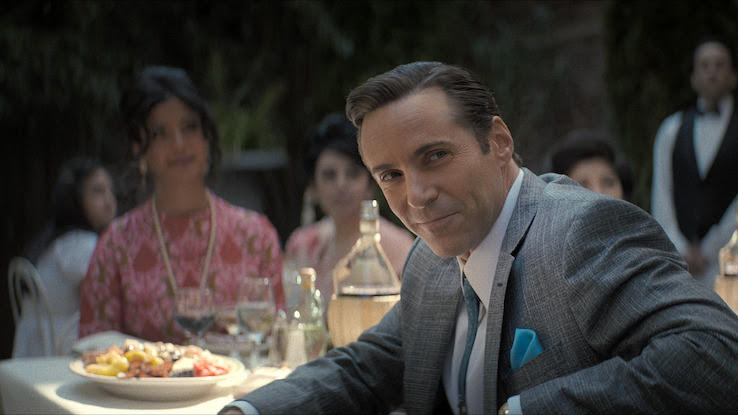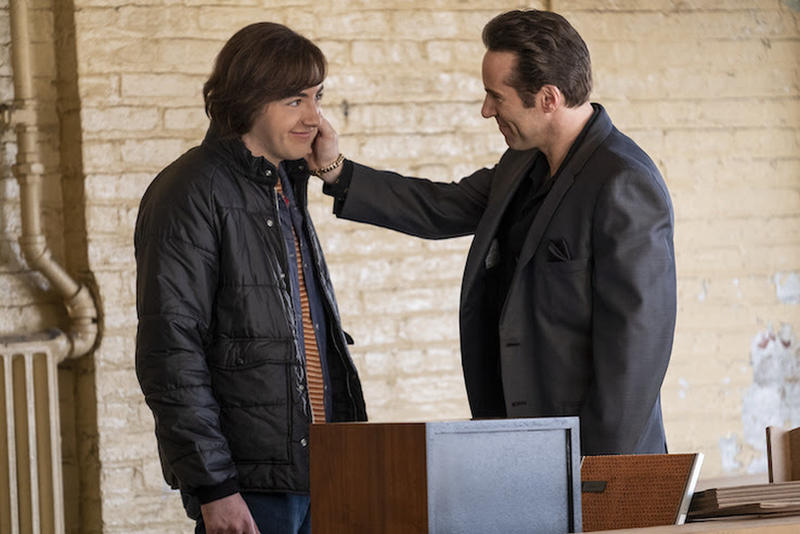
Rating: 6/10
Let’s get some stuff out of the way first. I’ve watched all six seasons of The Sopranos three times. The HBO show contributed to my falling in love with TV — movies were my first love. These days I keep an open relationship with both but on most nights I still prefer the comfort of a single self-contained episode with characters I’ve already met.
Now that we’ve gotten my Sopranos credentials out of the way, let’s talk about The Many Saints of Newark. The prequel movie to the mobster show opens in theaters and on HBO Max October 1. It’s co-written by Sopranos creator David Chase and Sopranos screenwriter Lawrence Konner and directed by Alan Taylor, who’s directed episodes of The Sopranos as well as Mad Men and Game of Thrones.
The movie is sort of a Tony Soprano origin story. We meet him when he’s still a kid — the film goes on to recreate some scenes from the seventh episode of season one of the show in which Tony’s dad gets arrested — and then follow him into his college days. This barely-early-twenties Tony is played by Michael Gandolfini, the son of the late James Gandolfini, who played Tony Soprano in the original show. Michael Gandolfini resembles his dad in both an eerie and youthful way. His almost-innocent face makes for the perfect vehicle to tell the story of how Tony started growing into the mafia boss he’d later become.
But the true protagonist of The Many Saints of Newark is Dickie Moltisanti, played by Alessandro Nivola. The character actor exudes levels of charisma that recall James Gandolfini’s magnetism in the show. Dickie is Christopher Moltisanti’s dad. Michael Imperioli reprises his role as Tony’s nephew and is the narrator of this story. He helps the viewer connect the dots and gets them acquainted with certain characters. He starts by presenting his dad, who in the sixties was running the mob business in New Jersey. “That fat kid is Tony,” says Christopher, introducing us to a young Soprano. “He choked me to death.” And, like that, you’re reminded of his character’s demise in the show and the fraught relationship between Tony and Christopher.
A Very Meta Movie

Chase has talked about The Many Saints of Newark being a standalone film but the title loses most of its allure if you’re not aware of the show’s history. Throughout the film, we see how Tony acquired his taste in a certain type of brunette of Italian descent. Nivola’s calculated performance of Dickie — Tony’s favorite uncle and father-figure when his dad is imprisoned — emulates some of James Gandolfini’s most recognizable gestures as Tony, from his way of patting his associates’ necks and cheeks to his manner of being affectionate and of speaking with his hands. Even the way Dickie dresses in the movie informs Tony’s future: impeccably tailored suits while outside and boxer shorts with white tank tops while inside.
Tony’s inception is not the only element in The Many Saints of Newark that’ll bring you memories of The Sopranos. Several series’ characters appear in the movie in younger iterations. A bespectacled Corey Stoll (House of Cards) is Tony’s uncle, Junior. Vera Farmiga (Up in the Air) dons not only a wig but also prosthetic makeup to portray Livia, Tony’s mom. And then there are my two favorite younger versions: Billy Magnussen (Into the Woods) is Paulie Walnuts and John Magaro plays a young Silvio Dante. Magaro channels Steven Van Zandt with a hilariously overacted performance of Silvio in a way that made me laugh out loud every time he was on screen.
Jon Bernthal (The Punisher) plays Johnny, Tony’s dad. And the film also manages to incorporate Goodfellas actor Ray Liotta playing not one but two roles: Dickie Moltisanti’s dad and his incarcerated uncle.
Leslie Odom Jr. (Hamilton) is Harold McBrayer, Dickie’s childhood friend and associate. Through his story of empowerment and pride, the filmmakers mark the 1967 Newark riots, which took place after a Black cab driver was arrested and beaten by two white police officers. McBrayer starts searching for independence from the Italian American mobsters after the riots and forms his own gang. The way the movie approaches the protests in Newark will remind you of the racial unrest of 2020 and 2021. But the subject of race and what it means to be Black in America never feels fully developed in the movie. This is still mainly an Italian American tale about gangsters.
“The Many Saints of Newark’s” Format of Choice

Michaela De Rossi is Giuseppina, Dickie’s lover. Through her ambition of becoming a beauty parlor owner, the movie exposes once again the sexism and oppressive character inherent to most of these men. But with only two strong female characters — Livia and Giuseppina — The Many Saints of Newark shows a lot more gender imbalance than the show did. Sopranos has always had a problem with portraying women. The last time I rewatched the show, I realized that many elements (that shouldn’t have been there to begin with) haven’t aged well. My main issue is still with the way the series handled most of the Bada Bing! employees and treated their naked bodies almost like wallpaper. Not to mention the violence inflicted on a pregnant sex worker in season three — she was beaten to death — or against Dr. Melfi (Lorraine Bracco) — she was raped.
Precisely because TV shows have been my preferred form of entertainment these past few years, I couldn’t help but wonder if a limited series could have been a more fitting format for this story. More time across several episodes would have allowed for a more nuanced progression of the stories, especially for characters like Giuseppina or Harold.
But in the end, and despite its shortcomings, The Many Saints of Newark is better just as a movie. With its inclusion of a scene where the gang eats in the back room at Satriale’s, the incorporation of a generous number of theatrical and familiar “Oohs!” from several cast members, and even the addition of what could be Tony’s first therapy session with a college guidance counselor who asks him about his mom, the movie is basically playing constant homage to the original show.
I don’t know how many HBO Max subscribers went back and binged Friends after watching Friends: The Reunion. But I suspect The Many Saints of Newark is going to cause many Sopranos’ enthusiasts to revisit the show once again. Either that or the series’ opening credits song doesn’t have the same pavlovian effect on everyone as it does on me.






